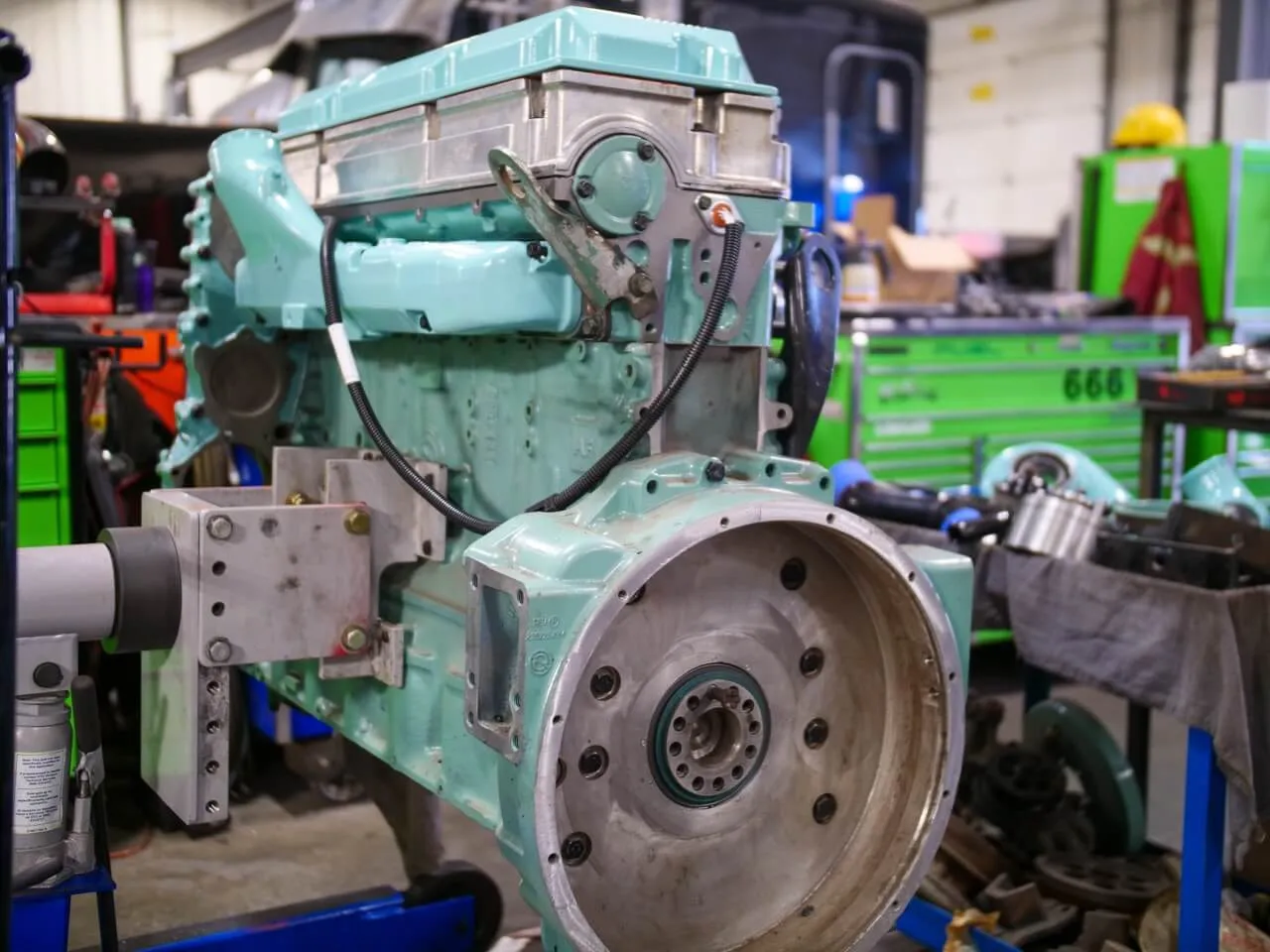Adrenaline Diesel Blog
Series 60 Survival Guide: Extending the Life of a Detroit Legend


Owners of the Detroit Diesel Series 60 benefit most from intentional, careful routine maintenance based on evidence. Heavy-duty trucks operate in demanding conditions and are subject to strict safety and emissions standards. A structured preventive plan enhances performance, minimizes unexpected downtime, and reduces long-term costs. The Series 60 shares core diesel components with other heavy-duty engines, including camshaft-controlled valves, fuel injectors, and the four-stroke cycle. Regular attention to lubrication, cooling, fuel delivery, electrical systems, and aftertreatment maintains reliability over high mileage.
A planned preventive maintenance schedule is more than calendar oil changes; it involves inspection, servicing, and software checks to detect issues early. Typical tasks include oil and fluid checks, tyre inspections, and brake evaluations, especially for trucks in harsh conditions. It records service intervals, documents findings, and links observations with corrective actions to understand engine health trends. The aim is to intervene early and prevent roadside failures, such as overheating, oil pressure loss, or fuel starvation, which can result in costly tows and missed deliveries.
On Series 60 engines, oil prevents friction and heat. A pump pressurizes it to lubricate bearings and critical parts, often passing through an oil cooler to absorb and release heat. If the flow decreases due to a failing pump or low oil, bearing damage can occur quickly. Immediate shutdown and diagnosis are crucial if oil pressure drops. Follow manufacturer guidelines for viscosity and change intervals, and inspect for leaks, proper oil level, and cooler condition. The cooler is vital for heat rejection.
The engine’s primary cooling loop utilizes liquid coolant to absorb heat from the block and head, then carries it to the radiator, where airflow removes it before the coolant returns. The water pump circulates the coolant; heat exposure degrades it over time, so timely replacement is essential. At the radiator, airflow from vehicle motion and the fan dissipates heat, readying the coolant for another cycle.
Airflow at low speeds is managed by the fan clutch, which activates the cooling fan when natural airflow is insufficient, such as in stop-and-go traffic, and deactivates at higher speeds to reduce drag. Overheating issues often stem from a faulty fan clutch, a blocked radiator, or a failing water pump. Every service should include a visual inspection of the cooling system and verification of fan engagement. In cold climates, check the antifreeze-to-water mixture to prevent freezing, as most coolants are designed for low-temperature protection.
The engine’s thermal management relies on secondary heat exchangers. Transmission fluid and gear oil go through coolers to shed heat, especially under heavy loads. An engine oil cooler maintains lubricant viscosity and film strength. Routine maintenance involves keeping these coolers clear of obstructions.
Reliable starts and stable operation depend on proper fuel delivery and a capable electrical system. When you turn the key, battery power activates the starter, glow plugs, and fuel injectors. The starter turns the crankshaft, and coordinated valve movement allows air in while the injectors deliver fuel. Since starting uses lots of energy, trucks rely on the alternator to recharge the battery and supply power. If the alternator fails, the battery must sustain electrical demand until it exhausts, as both work in parallel.
Fuel delivery issues cause hard starting, reduced power, or stalling. If the fuel pump fails to supply fuel, the engine stalls; diagnosis should verify the supply before replacing parts. The Series 60 relies on clean air and proper fuel metering. Regular maintenance includes checking filters and the electrical supply to ensure proper starting aids and injection systems.
Modern heavy-duty engines rely on aftertreatment systems to meet NOx and particulate standards. The EGR system recirculates cooled exhaust gases into the intake, thereby lowering combustion temperatures and reducing NOx emissions. Trucks with SCR inject Diesel Exhaust Fluid (DEF), containing 32.5% urea and 67.5% water, into the exhaust before the SCR catalyst, converting NOx into nitrogen and water vapour. This process helps heavy trucks comply with emissions regulations.
Upstream of the SCR, a Diesel Oxidation Catalyst (DOC) oxidizes CO and hydrocarbons, aiding emissions reduction. The Diesel Particulate Filter (DPF) traps soot to prevent pollution. Although each platform differs in implementation, all aim to lower pollutants to compliant levels, supporting proactive maintenance.
Use this brief checklist to apply the above systems in everyday practice.
Specific symptoms require immediate corrective action instead of continued operation. A rapid temperature increase indicates impaired cooling—often due to a faulty fan clutch, a clogged radiator, or a failing water pump—and necessitates a prompt shutdown and inspection. Sudden loss of oil pressure is equally serious; it suggests that bearings may lack pressurized lubrication, with a high risk of severe damage if the engine continues to run. If starting or power delivery is unstable, verify the charging output and fuel supply before attempting to restart.
Maintaining a Detroit Diesel Series 60 requires disciplined preventive maintenance, vigilant lubrication and oil pressure control, effective coolant and radiator management, verified electrical charging, reliable fuel delivery, and knowledgeable care of the EGR system, SCR catalyst, and aftertreatment parts. Its simple, serviceable design rewards this approach with durability and uptime.
Book a Series 60 health check with Adrenaline Diesel in Edmonton for tailored route and climate inspections, assessing fluids, cooling, electrical, fuel, and aftertreatment systems, and monitor progress with a PM plan.
Give us call or fill out our service request form to schedule your vehicle in for service at Adrenaline Diesel.

Adrenaline Diesel has extended service hours to ensure you get the best appointment time possible.

Sourcing parts for complex jobs is our specialty. We always aim for the fastest turnaround possible.